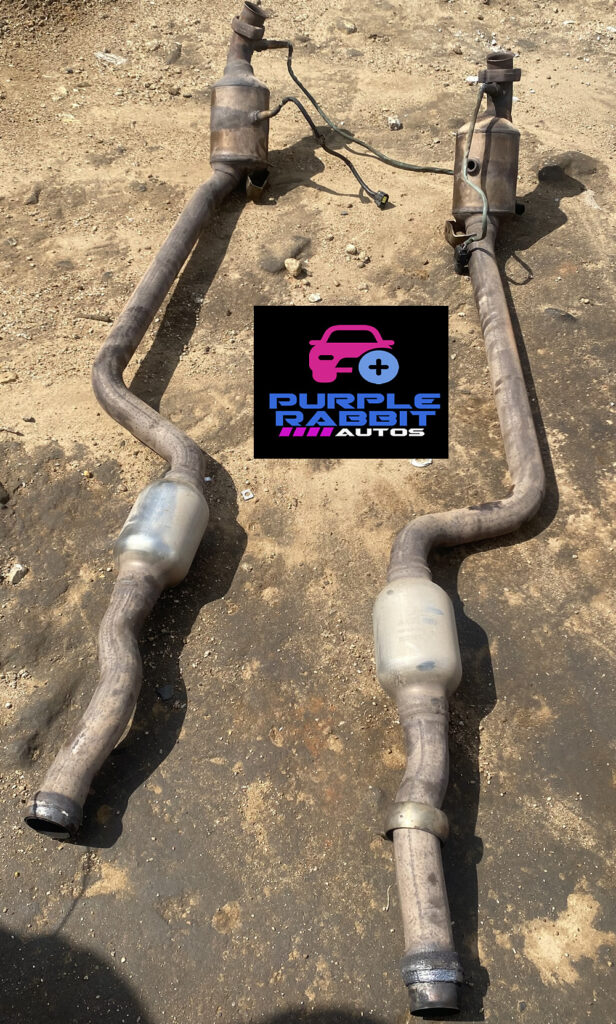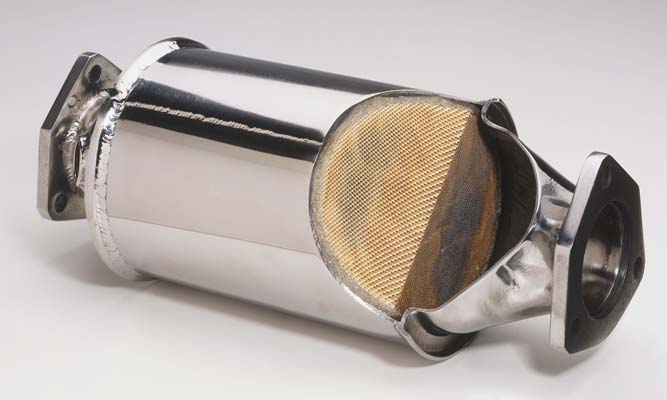Car catalytic converters uses
Catalytic converters popularly referred to as indomie in Nigeria are devices that reduce the harmful emissions from car engines by converting them into less toxic substances. They are essential for meeting the environmental standards and regulations that aim to protect the air quality and human health.
They contain precious metals such as platinum, palladium and rhodium, which act as catalysts to convert the pollutants into less harmful gases. These metals are valuable and in high demand, making catalytic converters attractive targets for thieves. Thieves can easily cut off the catalytic converter from the car’s underside, often in less than a minute, and sell it to scrap metal dealers for a quick profit. The cost of replacing a catalytic converter can range from hundreds to thousands of Naira to millions, depending on the car model and the availability of the part. In addition, driving without a catalytic converter can damage the engine and result in fines for violating emission standards in some countries like the US and Europe.
Overall History:
The concept of catalytic converters dates back to the late 19th century, when French engineers designed prototypes using inert clay-based materials coated with platinum, rhodium, and palladium., but their widespread implementation in automobiles came later. Here’s an overview of the catalytic converter’s history:
1970s: With increasing concerns about air pollution and its impact on public health and the environment, governments started introducing stricter emissions regulations. The United States introduced the Clean Air Act in 1970, setting the stage for the widespread use of catalytic converters.
Mid-1970s to 1980s: Catalytic converters became mandatory on new cars in the United States and other countries to comply with emission standards. Initially, converters were based on two-way oxidation catalysts (CO and HC reduction) but evolved to three-way catalysts (CO, HC, and NOx reduction) for more effective emission control.
1990s to Present: The technology and efficiency of catalytic converters continued to improve. Advancements in catalyst materials, substrate design, and engine management systems allowed for better emissions control while minimizing the impact on engine performance and fuel efficiency.
Future: As the automotive industry shifts toward electric and alternative-fuel vehicles, the role of traditional catalytic converters may evolve. However, as long as internal combustion engines remain in use, emission control technologies will continue to be essential for reducing environmental impact.

Components of a catalytic converter
The catalytic converter is typically made of precious metals like platinum, palladium, and rhodium. It is installed in the car’s exhaust system and works to convert harmful pollutants, such as carbon monoxide (CO), hydrocarbons (HC), and nitrogen oxides (NOx), into less harmful compounds like carbon dioxide (CO2), water vapor (H2O), and nitrogen (N2).
Honeycomb Substrate:
The substrate is typically made of ceramic or metallic material and has a honeycomb-like structure with a large surface area. It provides a stable platform for the catalytic reactions to take place.
Catalysts:
Precious metals such as platinum, palladium, and rhodium are used as catalysts in the converter. These metals facilitate the chemical reactions that convert harmful pollutants into less harmful ones.
Heat Shield:
A heat shield surrounds the converter to protect other vehicle components from excessive heat generated during the catalytic process.
Inlet and Outlet Pipes:
These are the pipes that connect the converter to the exhaust system of the vehicle.

Functions of catalytic converter
The primary purpose of the catalytic converter is to reduce harmful emissions from the vehicle’s exhaust gases. It achieves this by facilitating three main chemical reactions:
- Oxidation of Carbon Monoxide (CO): CO is converted into carbon dioxide (CO2), which is less harmful to the environment.
- Reduction of Nitrogen Oxides (NOx): NOx is reduced to nitrogen (N2) and oxygen (O2), both of which are harmless.
- Oxidation of Hydrocarbons (HC): Unburned hydrocarbons are oxidized into carbon dioxide (CO2) and water vapor (H2O).ca
The catalytic converter works by using two types of catalysts: an oxidation catalyst and a reduction catalyst. The oxidation catalyst oxidizes carbon monoxide (CO) and hydrocarbons (HC) into carbon dioxide (CO2) and water (H2O). The reduction catalyst reduces nitrogen oxides (NOx) into nitrogen (N2) and oxygen (O2). These reactions occur at high temperatures, around 400-800°C, depending on the type of engine and fuel.
Car catalytic converters also contribute to fuel efficiency and engine performance by reducing back pressure and enhancing combustion. Car catalytic converters are widely used on gasoline-powered vehicles, as well as on some diesel-powered vehicles, motorcycles, trucks, buses, locomotives, ships, and even some wood stoves .
It is important to note that the effectiveness of catalytic converters is highly dependent on their proper functioning and maintenance. Using low-quality or leaded fuels, as well as ignoring engine issues that may lead to an improper air-fuel mixture, can negatively affect the converter’s performance and lead to increased emissions. Regular vehicle maintenance and adherence to emission standards are essential for ensuring the catalytic converter’s optimal performance and longevity.






